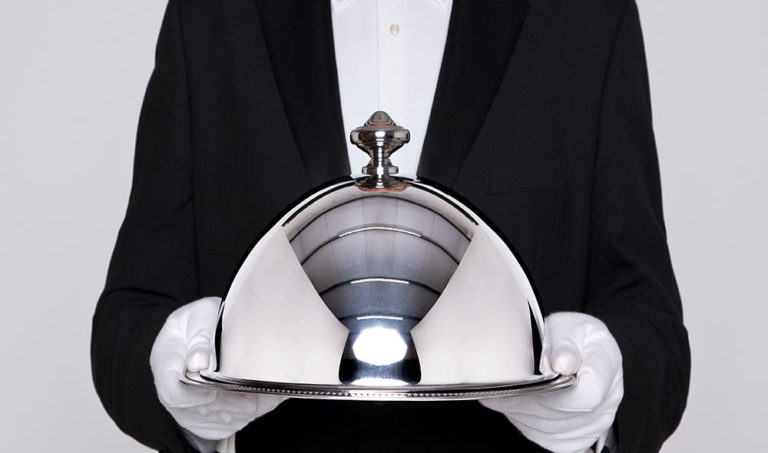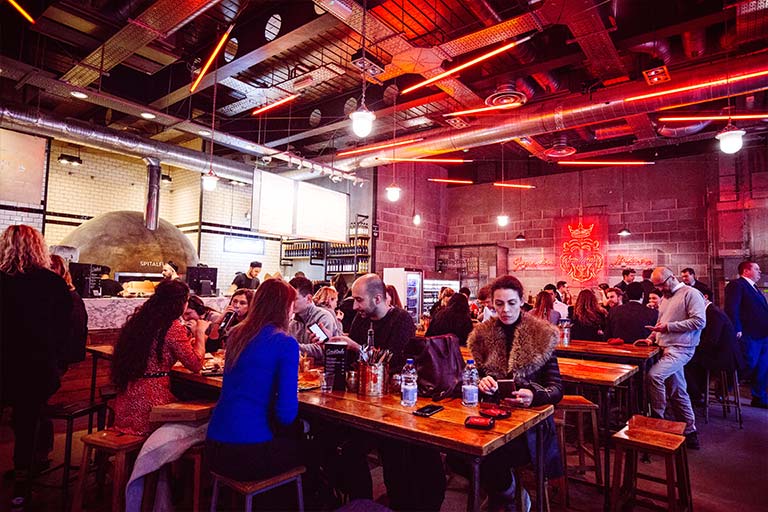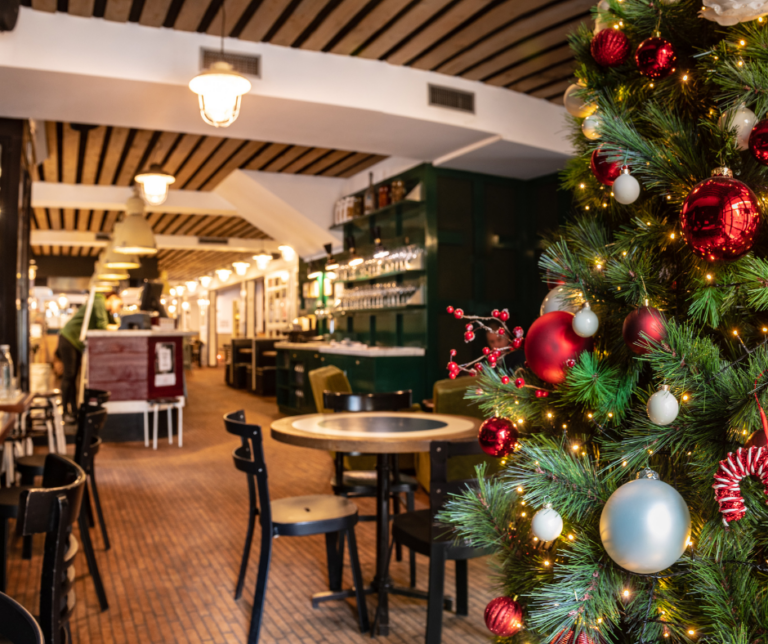There is no denying that the pandemic has had an enormous impact on the entire hospitality sector since lockdown began in March 2020 with a net decline of 7,592 licensed premises including restaurants and pubs. But are the changes to our lifestyles as a result of the pandemic the final death knell for fine dining or just a temporary hiatus?
This blog looks at the challenges facing the fine dining sector and explores ways in which gourmet dining can evolve through diversification, modernisation and technology.
Writing on the wall?
Even before the pandemic struck, some food writers like Tim Hayward were already claiming that the notion of global fine dining as “modernist-influenced, multi-course tasting menus, absurd ‘artistic’ plating and constipated interior design was the antithesis of creativity” and a “supra-national template, resulting in a deracinated product and diverting every chef of talent”. This may have been at the more extreme end of the criticism but many head chefs were also making the headlines before the pandemic in their request to be withdrawn from the famed Michelin Guide because inclusion created a great deal of pressure and an expectation around what patrons expected which stifled a chef’s creativity.
More recently The Good Food Guide which listed the best restaurants in the UK ceased publication, whether as a direct result of a tumultuous 18 months or their publisher, Waitrose, possibly foreseeing a bleak future for gastronomy?
Certainly, the overly formal, starched napkin and stiff service atmosphere has less place for modern diners who want to enjoy their experience in a relaxed environment where they are not intimidated by complex menus or long explanations of each course. But have the months of casual dining at home changed us so fundamentally that fine dining is something we have little appetite to resume?
The infamous “pivot”
Fine dining restaurants did not escape the need to pivot their operation and, just as casual dining turned to delivery and meal kits, so too did some of the country’s famous chefs in an effort to save their restaurant’s future.
Delivery may be the antithesis to the idea of haute cuisine but top-name chefs embarked on meal kits and online cooking lessons to reach their audience and generate much-needed revenue. Chefs like Adam Handling, Simon Rogan, and Clare Smyth all rolled out their own DIY meals to UK households and their popularity has shown proof of concept for this type of high-end ‘at-home’ dining.
Michelin-starred chef, Tom Aikens held cookery classes via Instagram to a subscribed audience who paid £20 a month to have 2 classes plus all the recipe details so they could recreate the dishes at their leisure.
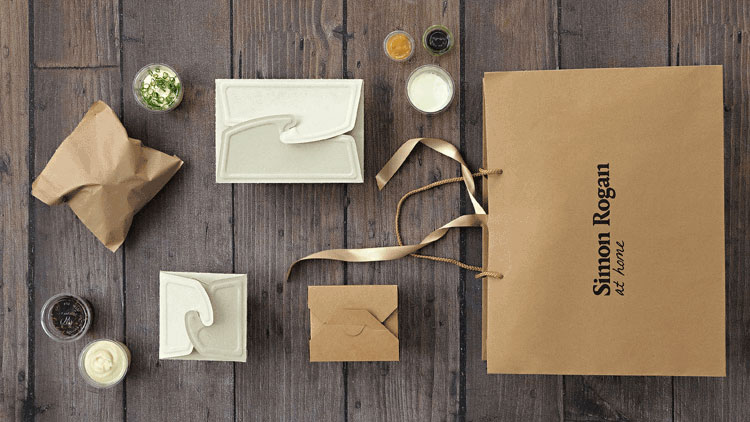
Temporary or permanent change?
So does the pre-pandemic backlash towards fine dining coupled with the pivot into ‘at-home’ dining and cookery lessons mark a temporary or more permanent change for fine dining restaurants? For many it will be the former as they were thick in survival mode and, at the time of writing, are already winding down these concepts in favour of their original fine dining fare.
But for some, the pandemic has forced restaurateurs to completely rethink their offering to be more accessible and viable to a wider audience. Nathan Outlaw has already announced a complete revamp of his Cornish establishment, Restaurant Nathan Outlaw, once it reopens, with a more accessible (and cheaper) menu.
Chef René Redzepi converted his Copenhagen Michelin two-star restaurant Noma into an affordable hamburger joint in December 2020 to cater to a more local clientele. With international travel still heavily restricted, his usual international customers who would travel great distances to try Noma’s menu dried up overnight. The burger joint, POPL, from the Latin word “populus” meaning people replaced the £300 Noma experience with £17 burgers for walk-ins and takeaways only.
The pandemic certainly taught fine dining chefs to step out of their comfort zones and try new things and it is essential that they retain this flexibility to keep themselves relevant against a changed dining backdrop.
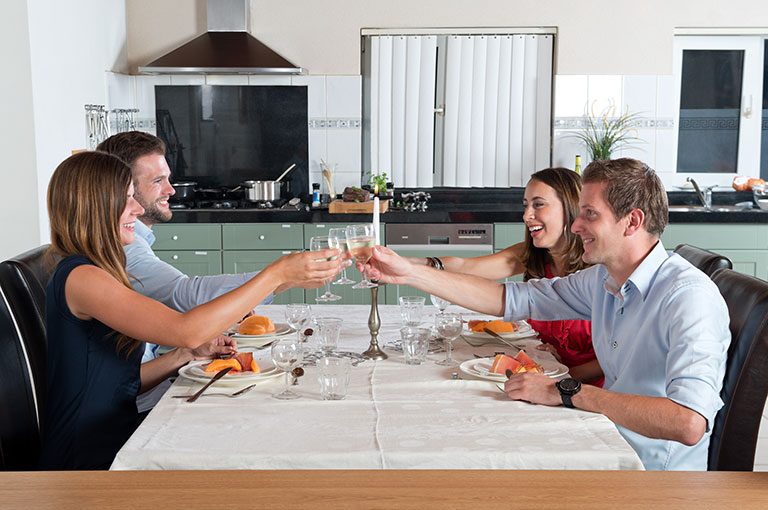
The current landscape: Lifestyle changes post-pandemic
Lifestyle changes as a result of the pandemic restrictions have forever altered the post-Covid dining landscape. For fine dining this means:
Less business lunch bookings
The practice of working from home has now been proven to work and so commuters will not be returning to city centre offices full-time for the foreseeable future. Rather it’s likely they will segment their working week into three days in the city and the rest working from home. This will mean less time for leisurely business lunches as they will look to condense as many of their face-to-face meetings into those three days. As business lunches to impress clients have always been a mainstay for lunchtime covers, this reduction will be felt keenly even after all the social distancing measures are lifted.
‘At-home’ dining set to continue
The silver lining is that with less commuting customers will have more disposable income with which to treat themselves while at home like gourmet meal kits. Many fine dining chefs had time during the lockdowns to perfect this offering and so with proof of concept, meal kits represent a viable supplementary revenue stream.
More occasion-led fine dining
Equally, people have lost over a year of special occasions and milestones to celebrate and the pandemic has turned many into accidental savers. These people will now be looking at top-end restaurants to celebrate in style.
Fine dining to fine-eating
The casualisation of fine dining has meant customers who may not have experienced food from a Michelin-starred chef have been able to sample their fast-casual version of gourmet burgers or pizza during lockdown. The same attention to high-quality ingredients and provenance but without the waiting list and high prices. This too, could eventually bring a whole new audience to fine dining as they seek to try the original in-venue experience.
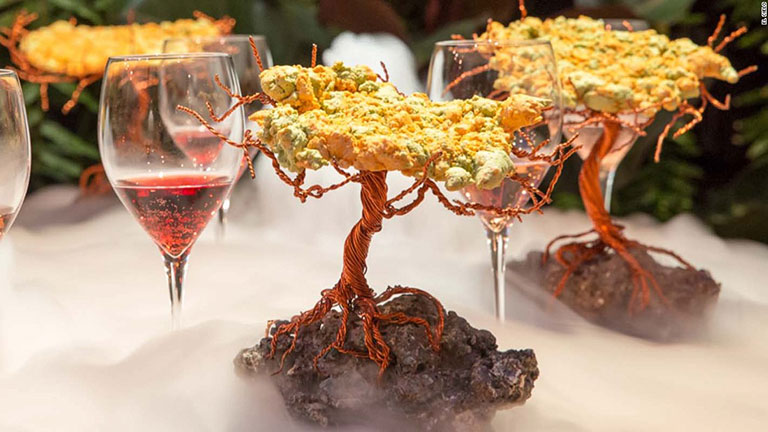
5 ways to evolve your fine dining offering post-pandemic
So what can fine dining restaurants do to get reluctant customers to return and grow their audience? Here are five areas to focus on when reopening:
1. Experiential dining over formality
Our dining habits over the last 18 months couldn’t be more casual – cooking at home, meal kits and takeaway. People want to dress up and share a special dining experience with friends and family. Formality and fussiness, no matter how good the food, will not cut it. Occasion dining needs to be fun, relaxed and different otherwise people may as well stay at home.
Experiential dining may have been more the mainstay of casual dining- think mini-golf dining brand Puttshack or Asian fusion restaurant chain inamo where menus are projected onto the table along with games. But offering more experience dining is what is expected – similar in impact to Heston Blumenthal’s molecular gastronomy had 25 years ago when he burst onto the scene offering a feast for all the senses and an up-ending of a diners’ expectation.
Advances in technology coupled with an increasingly multidisciplinary approach to dining—think storytelling, augmented reality, virtual reality, robotics, opera, electronica, poetry, olfaction, performing arts, singing, painting, cinema, music—should continue to push the boundaries of the culinary arts.
It is this impactful dining experience in a destination venue that people, who have been starved of experience during the pandemic, will crave post-lockdown and be willing to indulge in as a special treat. After all, no matter how good the meal kit, it’s impossible to recreate the destination ambience of a great fine dining restaurant – the decor, the atmosphere, the service, the vibe – this cannot be bottled.
2. Offer an inclusive menu
This means taking out any overly pretension dishes and relying instead on quality ingredients that marry together into something that looks and tastes good. Fine dining is not about intimidating or embarrassing your customers but including them in a wonderful gastronomy journey.
This inclusiveness should include catering to the many and varied dietary requirements that modern diners expect. No more can inflated chefs throw their arms in the air and refuse to cater to vegans or gluten intolerances as it ruins the art of their dishes! To do so is to shut the door to a significant (and growing) percentage of the dining public.
Chefs like Tom Kerridge understand this and have evolved their portfolio to reflect these changes with his forthcoming opening of fast-food restaurant, Bad Vegan in Camden. Although not fine dining, Tom recognises that plant-based isn’t going anywhere and actually strives to be inclusive with his cooking. A canny move given that Gen Zers (18-23) are the most meat-free generation and tomorrow’s future fine dining audience.
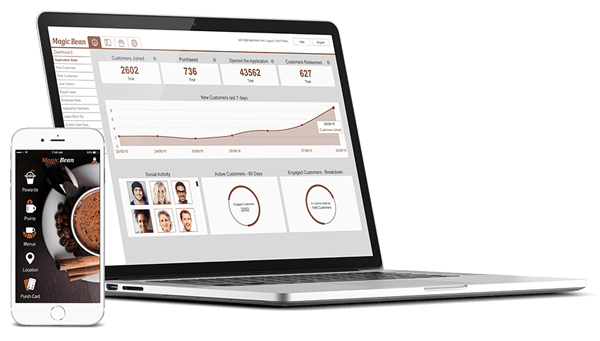
3. Use technology to elevate customer service
There is a rightful expectation that when you attend a fine dining restaurant you are paying for exceptional customer service which includes a personal greeting and on repeat visits a welcome back by name. But by introducing integrated guest experience software to your EPoS system, you can take this personalisation to a whole other level.
Booking
This starts with your booking system which, regardless of a customer’s touchpoint, offers a seamless and automated journey to making that initial booking. Ensure any special requirements are noted in the CRM e.g. if it’s a special occasion, dietary or accessibility requirements. [As demand increases, it’s also an opportunity to take card verification on bookings, gaining financial commitment at peak times and avoiding those frustrating no-shows.]
Pre-arrival
This is where you can get creative with your content marketing to provide intriguing tasters of what to expect on their visit. For repeat customers, where you already have guest notes on the CRM, you can make these even more personal based on their historic dining preferences.
Providing actionable SMS and email reminders also offer customers easy ways to cancel or re-schedule, again minimising no-shows.
Arrival
Thanks to the integrated booking system, your FOH are fully appraised of the customer’s details and for returning customers, their dining preferences (Do they like to sit at a particular table? Do they have any dietary needs? Do they like a particular drink? Are they big-spenders, VIPs?) Your experienced FOH can use all this information to truly tailor the experience to your guests as well as gleaming new details from the current visit to add to your guest booking notes.
Ordering
Using digital menus has traditionally been the reserve of the QSR and fast-food sector but in Covid times having a contactless option should not be ruled out even for fine dining restaurants as long as it’s used sensitively and intuitively. Although many diners will still prefer and expect to have their waiters explain the menu, make suggestions and take their order, some may prefer to find out additional information about a dish, the provenance of its ingredients, or best drinks pairings all at their own leisure via the digital menu on their smartphone. It’s just about providing your diner with options.
The benefits of a digital menu are the ability to offer a completely personalised version for repeat customers based on their historic preferences. For example, you know that they only drink red wine and so they are only presented with the red wine list; you know they have a nut allergy so their menu excludes all dishes with any trace of nuts and so on.
Post-visit feedback
Gathering feedback both during and post-visit is crucial to help improve your offering and ensure repeat visits so using review software integrated into your EPoS like Feed it Back or Yumpingo makes leaving a review post-payment quick and easy. These review platforms also make responding to post-visit reviews from different sources like Tripadvisor, Google reviews and Facebook easy by housing them on one platform for an immediate response within these social channels.
If a business resolves any issues quickly and efficiently, 95% of unhappy customers will return to your restaurant and we know it costs five times as much to acquire a new customer compared to retaining a loyal one.
Post-visit marketing
It’s important to nurture your relationship with your customers and again technology is your friend here. By integrating your EPoS and CRM, you can use content marketing outreach to drive repeat visits and customer retention. If you know a birthday is approaching, can you offer a special group package so friends (read new customers) can benefit too? Blogs and email marketing can keep them up-to-date with all the latest news from the restaurant and whet their appetite for a return.
Loyalty and gifting
By incorporating loyalty platforms like Toggle or Yoyo wallet, you can also provide gift cards so your customers can share the love and gift a fine dining experience as well as redeeming personal rewards for their loyalty.
You gain another contact to the CRM as well as a goldmine of data which you can splice and dice in whichever way is most useful such as building up a hierarchy of guests based on visits/spends.
4. Look at your sustainability credentials
Sustainability is something that will be firmly back on the agenda as hospitality starts to get back on its feet. As we discuss in our recent blog “How (and why) to make your restaurant more sustainable”, it’s something that your customers and your staff want and will be one of the considerations when choosing to dine with you or not. Indeed, 33% of consumers surveyed said the sustainability of a venue’s ingredients has become more important to them than it was before the pandemic.
This does not have to be an overwhelming task as you can make small changes very easily by reducing food waste using effective kitchen management and stock control software for example. Look at our blog for more ways you can achieve better sustainability within your business and your customers and the planet will thank you for it.
5. Embrace your local community
As well as demonstrating your sustainability ethics it’s also important to contribute to the community around you. If the pandemic has shown us one thing, it is just how important our communities are and how we need to support each other. Hospitality has always been a big part of this country’s social fabric and so it’s about resuming this position once again.
The hospitality sector was certainly front and centre throughout the pandemic with some great community-minded projects such as Feed the NHS which raised over £1 million and helped restaurant brands donate 40,000 free meals a day to NHS workers.
For many fine dining restaurants whose reputation bought in a clientele list from far and wide, the international travel restrictions have meant looking for more local support. This means engaging with their local community and becoming less elitist and more accessible. Offering training to community colleges, contributing to local initiatives, giving cookery demonstrations at community events are all ways that you can connect and give back to the community around you.
Conclusion
Experiential modernisation, technology and sustainability will undeniably prevail in this new post-pandemic culinary landscape. Re-evaluating your fine dining offering is the key not just to surviving post-lockdown but thriving.
Embracing technology, not just for tech sake, but to support your staff is important. As is modernisation and diversification to fine-eating options which may spread your risk and increase your income streams. However, spreading the benefit you bring and transforming the ways you connect with and serve your community could be the real catalyst to a fine dining resurgence post-pandemic.
